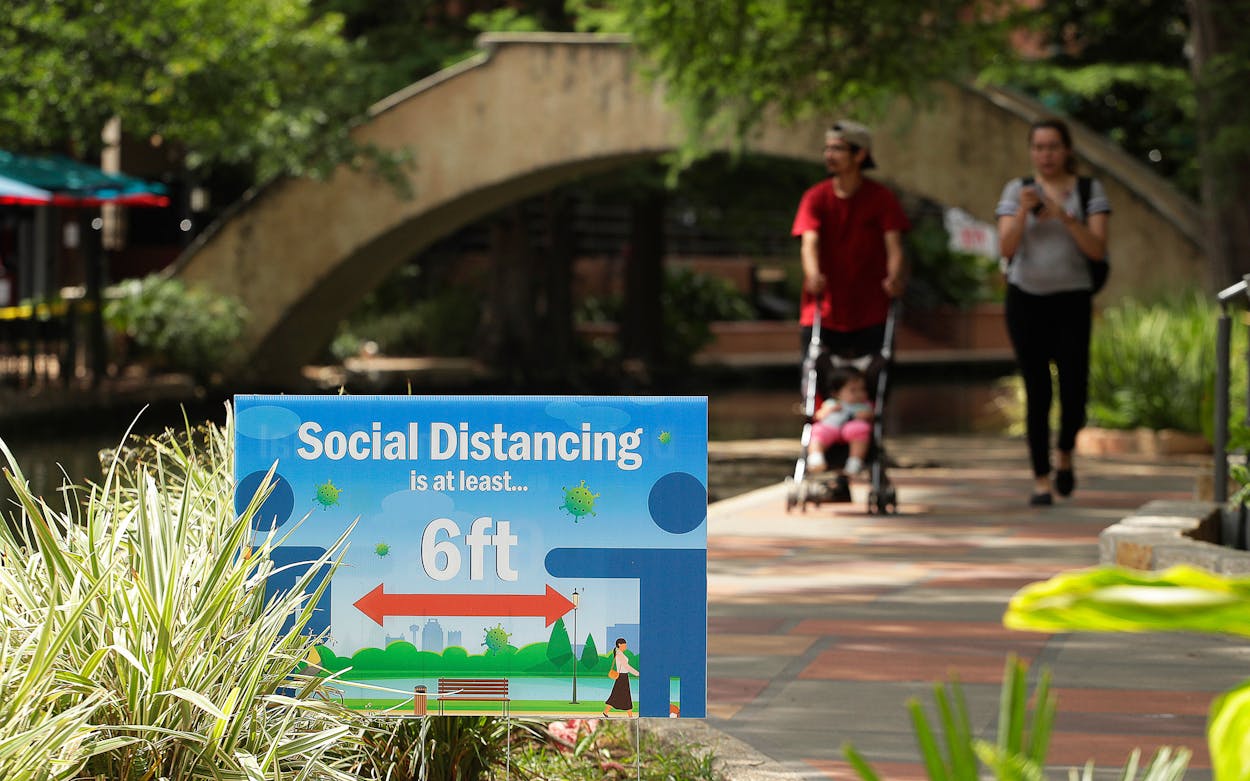The current spike in coronavirus cases and hospitalizations in Texas isn’t unexpected. When the state began winding down its restrictions on businesses and public gatherings on May 1, despite evidence that the pandemic was far from being under control, Governor Greg Abbott acknowledged that reopening would “lead to an increase in spread.” Abbott justified relaxing restrictions by arguing that more coronavirus cases are acceptable, as long as those cases don’t lead to overwhelmed hospitals or a sharp uptick in the death toll.
Later that month, experts at the University of Texas COVID-19 Modeling Consortium projected that reopening could lead to a rise in hospitalizations that would necessitate a second order closing businesses and restricting public gatherings. Austin city council member Greg Casar told me shortly before reopening that if cases in the city threatened to overwhelm hospitals, the city would take action on its own. “I hope the governor supports us shutting down the city again at that point,” he said. “And if he doesn’t, we’ll have to do it again anyway.” Casar said that he’s confident that the Texas constitution gives Austin the authority to do that, and that if hospitals were filling up, courts would side with the city.
In late March, as “flatten the curve” served as a national mantra, Texans largely accepted strict mandatory public safety measures to protect themselves and their neighbors—and especially their elders—from a disease that had wreaked havoc throughout the world. While the order was in place, Texas avoided the sort of exponential growth seen in New York and Northern Italy.
As cities now face rising hospitalizations and case counts, though, the politics around orders that close down businesses and prevent public gatherings have changed. When heavy restrictions were in place, armed right-wing protesters showed up everywhere from bars to hair salons demanding the right to buy a drink or get a haircut. More recently, a broad coalition of demonstrators against police brutality, galvanized by the killing of longtime Houstonian George Floyd at the hands of the Minneapolis police, have gathered, often packed closely together (though outdoors), for protests across the state.
Last weekend, the Washington Post opinions section published a column headlined “Social Distancing Is Over.” The piece argued that “we’ll never be able to lock down our cities again; once you’ve let the cat out of the bag, kitty won’t allow himself to be stuffed back in.” If mass protests are happening, the Post’s columnist argues, then on what moral authority can leaders say that church gatherings shouldn’t, or that a restaurant owner who wants to pay her bills must keep her business closed?
That argument resonates at the top levels of government, too. On Thursday, Treasury Secretary Steve Mnuchin declared, “We can’t shut down the economy again,” days after the U.S. officially entered a recession. In Texas, nearly 2.4 million are out of work. But economists argue that shutdown orders aren’t the root of the problem that’s wreaking havoc on the economy—it’s the pandemic itself, which creates conditions in which Americans are less likely to shop or go out or go back to certain unsafe workplaces, out of fear of catching the disease.
It’s possible that we’ll see new mandatory orders—Houston officials hinted on Thursday that they were considering such measures—but statewide, the trend has been moving in the opposite direction. On Friday, new state rules went into effect expanding restaurant capacity and allowing amusement parks to reopen in much of Texas. As the state moves into a new phase of the pandemic, with cases on the rise, focus has shifted away from mandatory public safety measures and toward placing the responsibility for slowing the spread of the disease in the hands of each individual Texan.
In Austin, public health experts point not just to the state’s reopening policy as a reason for the rise in infections, but also to residents relaxing their individual approaches to social distancing and mask-wearing. This brings to mind Lieutenant Governor Dan Patrick’s suggestion at the start of reopening that combating the disease was, ultimately, a matter of personal responsibility. (Patrick’s comments came not long after he suggested that seniors should “be willing to take a chance on [their] survival” for the sake of the economy.)
A version of “personal responsibility” that looks like “I’ll take responsibility for my risk, and you take responsibility for your risk,” though, neglects the reality of a pandemic. Responsibility may be personal—but risk is communal. Everyone can both get sick with the virus and pass it on to someone else. A person who gets infected while packed into an overcrowded bar can pass the disease to a supermarket cashier who is otherwise steadfastly avoiding high-risk situations. A healthy young person whose sense of personal responsibility leaves him comfortable spending a leisurely evening in a bustling restaurant can infect a roommate who works in a nursing home.
In the early days of the pandemic, the risks to others were a part of the conversation around the instruction to stay at home. Washington governor Jay Inslee, introducing a social distancing measure, said the penalty for violating the state’s guidance was “you might be killing your granddad if you don’t do it.” Nothing about the underlying stakes of the pandemic have fundamentally changed since Inslee’s statement. The penalty for engaging in high-risk behavior in Texas now might not be a ticket or a fine—but you still might, indeed, be killing someone’s granddad if you do it.
As mitigation falls to individuals, the state is relying on Texans to think of personal responsibility as an obligation. That means wearing masks when you’re around others, avoiding underventilated indoor spaces, and maintaining social distance. Those practices might take the joy out of living life to the fullest—but personal responsibility sometimes means choosing to do the unpleasant or boring thing when the times demand it. With Texas entering the most dangerous period of the pandemic yet, the times most certainly do.
- More About:
- Politics & Policy
- Greg Abbott
- Dan Patrick








